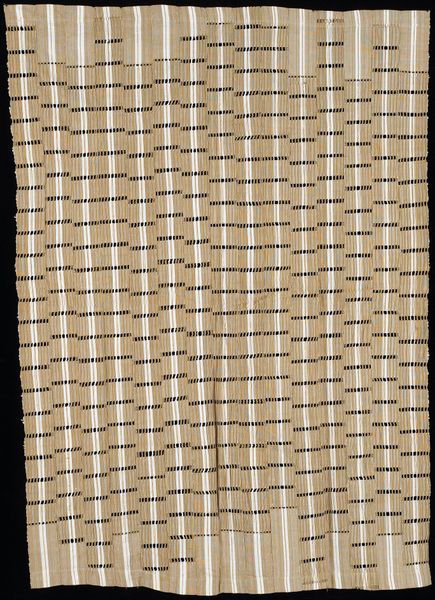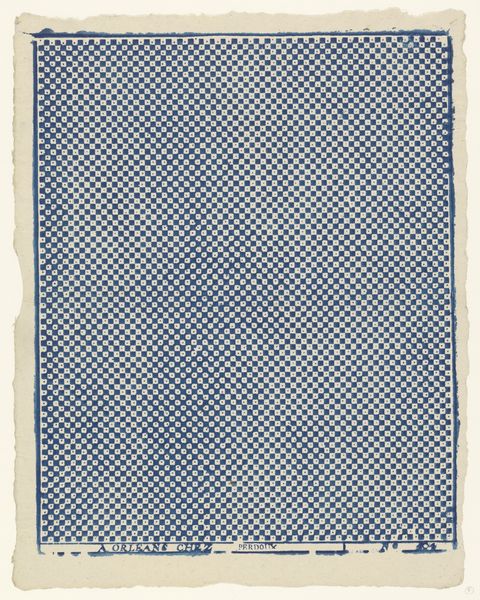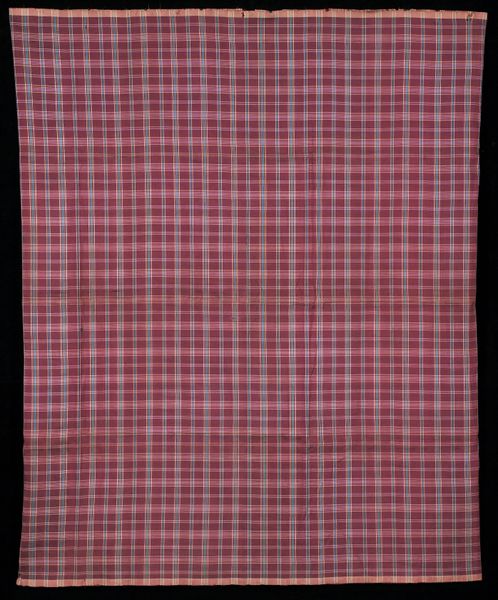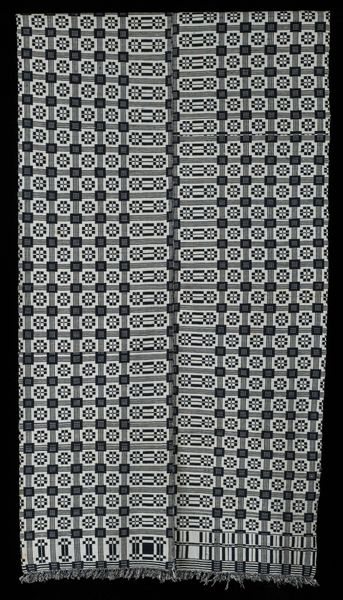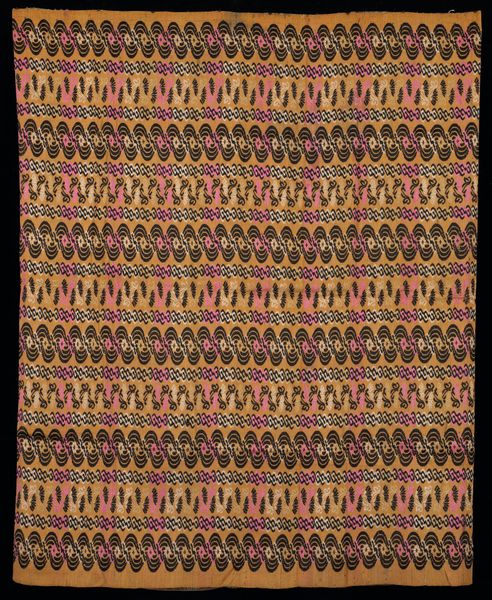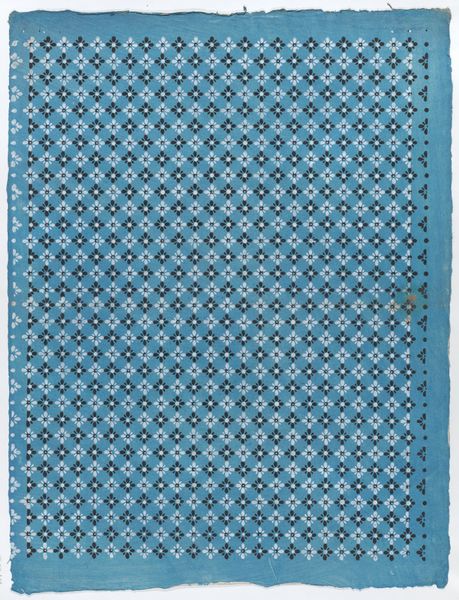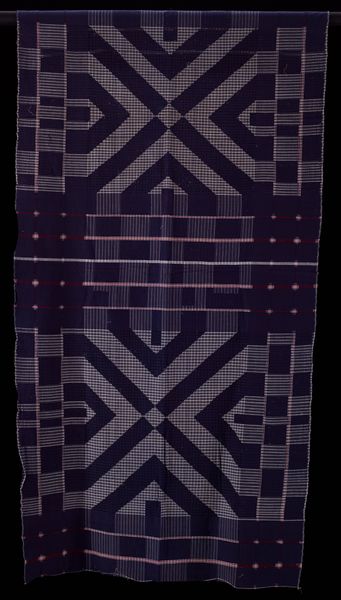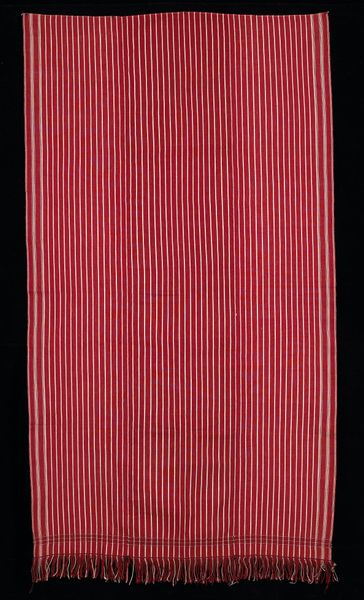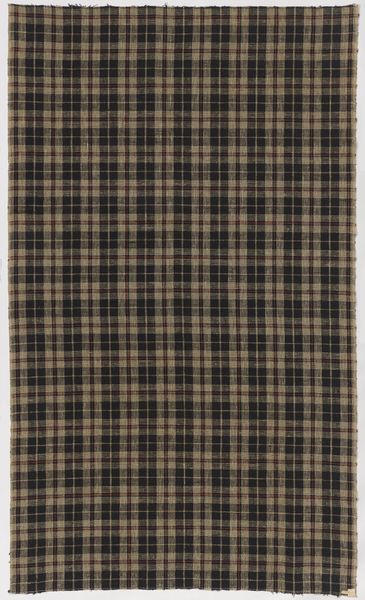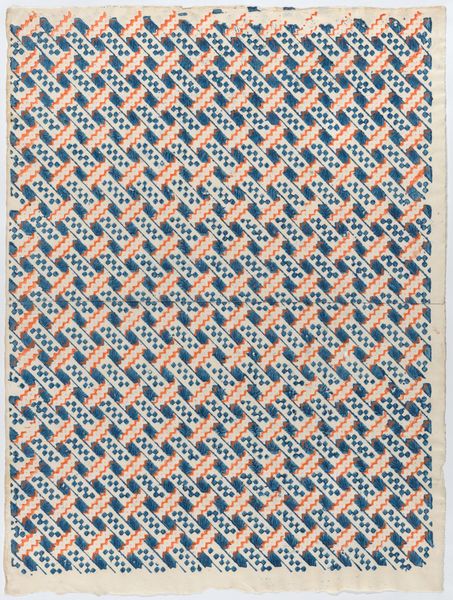
textile, cotton
#
pattern
#
textile
#
geometric
#
cotton
Dimensions: 61 3/4 x 30 1/2 in. (156.85 x 77.47 cm) (without fringe)
Copyright: Public Domain
Curator: Here we have a cotton textile called "Rebozo," likely created around 1950; it's part of the collection at the Minneapolis Institute of Art. Editor: It's strikingly linear and, oddly enough, feels simultaneously both vintage and quite contemporary in its use of bold lines and repeated geometric figures. Curator: Yes, the rebozo itself, a long rectangular shawl, is far more than just a piece of cloth in Mexican culture. It’s heavily symbolic – deeply tied to feminine identity and a potent visual marker of heritage. It evokes generations of women; mothers, daughters, grandmothers… it carries stories. Editor: Right, you can almost trace the process in the pattern. See how the weft threads create these broken, almost pixelated lozenges between the crisp red warp stripes? I’d be fascinated to learn about the specific dye process; were these natural pigments or early synthetic ones? Curator: It's that subtle "blurring" that makes it interesting, isn't it? A symbol of shifting cultural identity perhaps or maybe even the imperfections of memory itself, where clear details eventually fade around the edges? Editor: I suspect that deliberate aesthetic is part of a specific weaving method too. The rebozo isn't just an aesthetic object; it is work made manifest; the weaver would invest intense time and skill, producing far more than a pretty pattern but instead generating a significant social and economic contribution. Curator: Exactly. Think about the various ways a rebozo can be worn—as a head covering signifying modesty, or even used as a baby carrier reflecting nurturing and motherhood. Editor: Looking at it again, I am struck by the raw edge and how crucial that design decision is to its effectiveness. There are visible decisions and an insistence on exposing the means of its creation. It feels somehow grounded and more “real”. Curator: It offers such rich material for both practical and symbolic contemplation, doesn’t it? Editor: Absolutely. It truly bridges artistic intention with daily life; it elevates everyday acts through art.
Comments
No comments
Be the first to comment and join the conversation on the ultimate creative platform.
